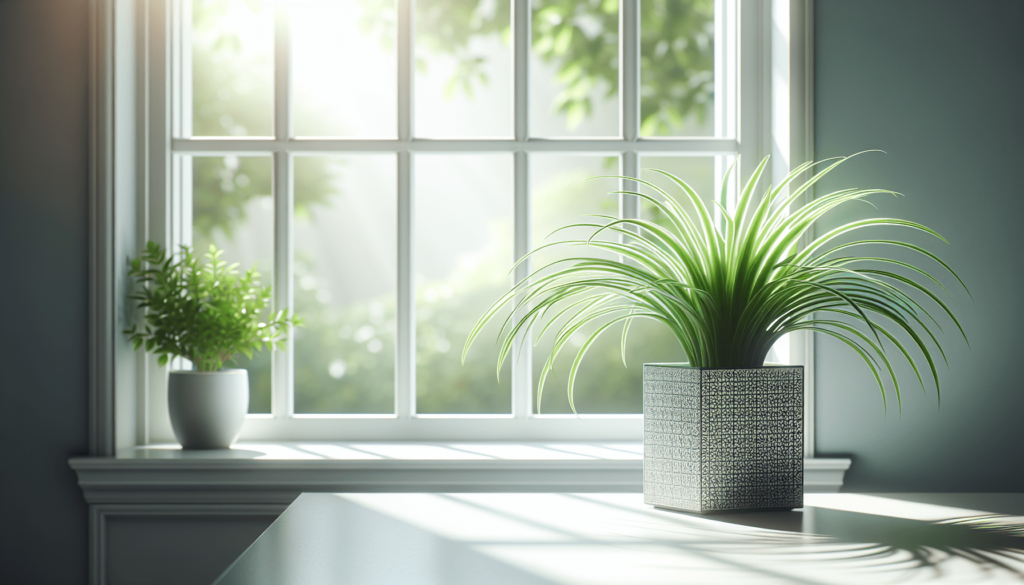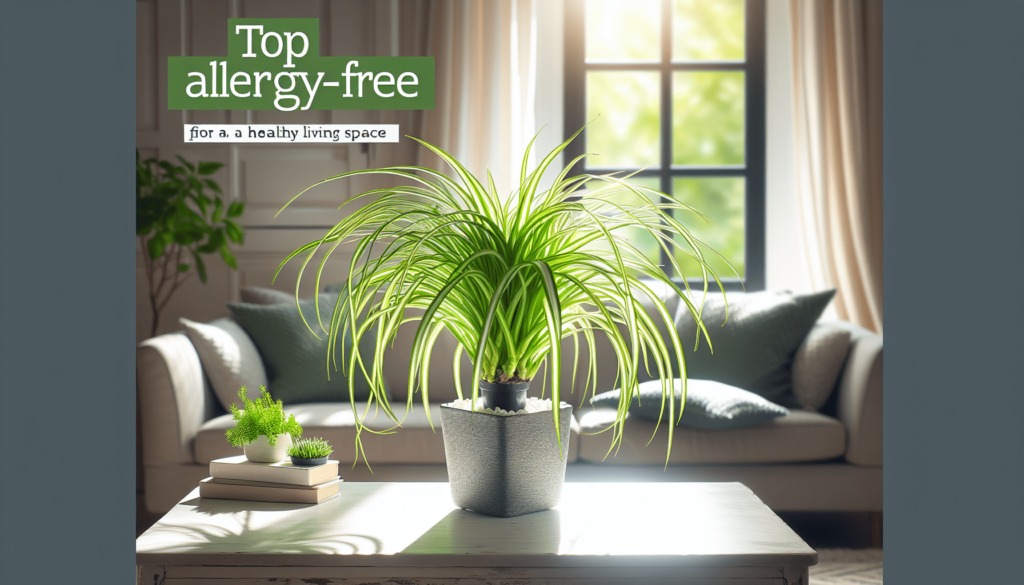Have you ever wondered how you can turn your living space into a sanctuary while steering clear of allergens? If you’re among those who love the idea of enhancing your home with greenery but are cautious about allergies, you’re in the right place. Plants offer a range of benefits, such as purifying the air, boosting mood, and beautifying your space. However, for some people, certain plants can also trigger allergic reactions. So, how can you enjoy the best of both worlds—lush indoor plants without the allergy flare-ups?
In this guide, we’ll take a friendly stroll through the world of allergy-free plants. These are ideal for creating a clean and healthy living atmosphere. Whether you’re a plant enthusiast or new to indoor gardening, you’ll appreciate these low-maintenance, high-reward plants that promise to minimally impact allergy sufferers.
Why Choose Allergy-Free Plants?
Living with indoor plants should be an enjoyable experience, free from the worry of constant sneezing or itchy eyes. Allergy-free plants are perfect for people prone to allergic reactions, and they allow you to enjoy the benefits of nature indoors without the downsides. They are often low in pollen, making them an excellent option for people sensitive to allergens. Moreover, allergy-free plants generally require low maintenance, thrive with minimal sunlight, and can withstand various indoor conditions.
The Benefits of Allergy-Free Plants
Allergy-free plants offer more than just a sneeze-free environment. They help make your home healthier by purifying the air while maintaining a tranquil atmosphere. These plants can also be excellent for mental well-being, reducing stress, and promoting relaxation in your living space.
-
Air Purification: Many allergy-free plants are known to absorb toxins and convert carbon dioxide into oxygen, improving indoor air quality significantly.
-
Mental Health: The presence of greenery can enhance your mood, reduce stress levels, and even increase productivity.
-
Aesthetic Appeal: These plants bring life and vibrancy to any room, creating an inviting environment.
Understanding these benefits helps underline why integrating plants that don’t provoke allergies is crucial for a harmonious and healthy living space.
Top Allergy-Free Plants for Indoor Spaces
Let’s talk about some of the most popular plants for maintaining an allergy-free zone in your home. These plants are loved for their resilience, low pollen production, and health-enhancing attributes.
Snake Plant (Sansevieria)
The Snake Plant, also known as Mother-in-Law’s Tongue, is a striking, low-maintenance plant that is both hardy and forgiving. It’s perfect for beginners and seasoned plant lovers alike.
- Allergen Insights: This plant is low in pollen and is non-toxic to humans, making it an allergy-friendly option.
- Care Tips: Snake Plants thrive in indirect sunlight and need watering only after the soil has completely dried out. Overwatering can be detrimental, so it’s best to err on the side of underwatering.
Peace Lily (Spathiphyllum)
Peace Lily is not only elegant but also an excellent air purifier. Its lush green leaves and white blooms make it a beautiful addition to any room.
- Allergen Insights: Known for their low pollen production, Peace Lilies are unlikely to trigger allergies.
- Care Tips: They prefer shade and well-draining soil. It’s essential to keep the soil moist but not overly wet to prevent root rot.
Bamboo Palm (Chamaedorea seifrizii)
A graceful plant with feathery green fronds, the Bamboo Palm is an effective air purifier that adds a touch of the tropics to your home.
- Allergen Insights: It produces very little pollen, making it a safe bet for allergy sufferers.
- Care Tips: Bamboo Palms require bright, indirect light and regular watering to keep the soil consistently moist but not soggy.
Spider Plant (Chlorophytum comosum)
A favorite among households, the Spider Plant is renowned for its easy care and ability to thrive in various conditions.
- Allergen Insights: This is among the least likely plants to cause allergies due to its low pollen levels.
- Care Tips: Spider Plants enjoy bright, indirect sunlight and prefer to be watered liberally but allowed to dry out slightly between waterings.
Aloe Vera (Aloe barbadensis miller)
Aloe Vera is celebrated for its medicinal properties and is a popular indoor plant that requires minimal care.
- Allergen Insights: Aloe Vera is typically low in allergens and can be safely kept in most homes.
- Care Tips: This succulent prefers bright sunlight and infrequent watering, with enough time for the soil to dry completely between waterings.
Rubber Plant (Ficus elastica)
Rubber Plants are visually striking and known for their glossy, dark green leaves.
- Allergen Insights: Their low pollen production is a plus for anyone worried about allergies.
- Care Tips: They thrive in bright, indirect light and should be watered once the top inch of the soil is dry.

How to Care for Allergy-Free Plants
Caring for allergy-free plants involves mimicking their natural environment as much as possible while keeping in mind your household’s specific conditions. Here are some tips:
Light Requirements
Knowing the light requirements for each plant is crucial. While some plants flourish in bright sunlight, others prefer the subtle glow of indirect light.
- Bright Light: Plants like Aloe Vera need more light to maintain their vibrant color and health.
- Indirect Light: Plants such as Peace Lilies and Snake Plants are more comfortable with filtered sunlight.
Watering Needs
Each plant has specific watering requirements. Overwatering is a common issue that leads to root rot and plant failure.
- Drought Tolerant: Aloe Vera and Snake Plants thrive with minimal water.
- Moisture Lovers: Peace Lily and Bamboo Palm appreciate consistently moist soil.
Soil and Drainage
Ensuring that your plants are in the right type of soil is also crucial. Soil should be well-draining to prevent water from pooling and causing root rot.
- Well-Draining Mix: A typical potting mix will work for most plants, but succulents like Aloe Vera may require a special cactus mix.
- Container Choice: Pots with drainage holes can prevent water from accumulating at the bottom, which is especially important for moisture-sensitive plants.
Regular Maintenance
Regular maintenance and care will ensure your plants thrive and remain allergy-friendly.
- Dusting Leaves: Gently wiping the leaves with a damp cloth helps the plants breathe easier and reduces the risk of mold.
- Pruning Dead Leaves: Removing any unhealthy leaves will allow the plant to direct its energy toward healthy growth.
Monitoring Plant Health
Keeping an eye on your plants for signs of stress or disease will go a long way in maintaining a healthy indoor environment.
- Fungal Infections: Look for white spots or fuzzy growth and treat promptly.
- Pest Control: Monitor for insects and treat with safe, plant-friendly pesticides if necessary.
Enhancing Indoor Air Quality
Bringing allergy-free plants into your home has a positive impact on indoor air quality, but there are other steps you can take to keep your living area as clean as possible.
Ventilation
Ensure your home is well-ventilated to allow fresh air to circulate. This can reduce the concentration of indoor air pollutants.
Humidity Control
Controlling humidity can prevent mold and mildew growth, which are common allergens. Using a dehumidifier might help in maintaining a comfortable humidity level.
Air Purifiers
Invest in a good air purifier to further enhance air quality. This can capture airborne allergens and pollutants, complementing the natural air purification from your plants.

Allergy-Free Plant Arrangement Ideas
Consider how you might arrange your allergy-free plants to complement your home decor while maximizing their health benefits.
Vertical Gardens
Vertical planters or wall hangers can save space and add a green, vibrant touch to any room. Spider Plants and Ferns do well in these setups.
Tabletop Displays
Snake Plants and Peace Lilies are ideal for tabletop arrangements. Their striking appearance can enhance your living room or office space.
Hanging Baskets
Plants such as Spider Plants look delightful in hanging baskets, providing an airy, floating aesthetic.
Grouped Pots
Grouping several plants in different pots can create an effective focal point in a room. This can also help maintain optimal humidity among the plants.
Conclusion
Creating a sanctuary with allergy-free plants is a wonderful way to harness nature’s tranquility while safeguarding your health. These plants purify the air, enhance your home’s aesthetic appeal, and provide numerous benefits without the downside of triggering allergies. By selecting the right plants and knowing how to care for them, you can cultivate a thriving indoor garden that makes your living space beautiful and soothing.
Remember, the key is to choose plants that align with your lifestyle and living conditions. There’s no one-size-fits-all solution, so consider your home’s unique environment as you embark on this green journey. With a bit of care and attention, you’ll find that nurturing these plants can be a rewarding and fulfilling endeavor.
